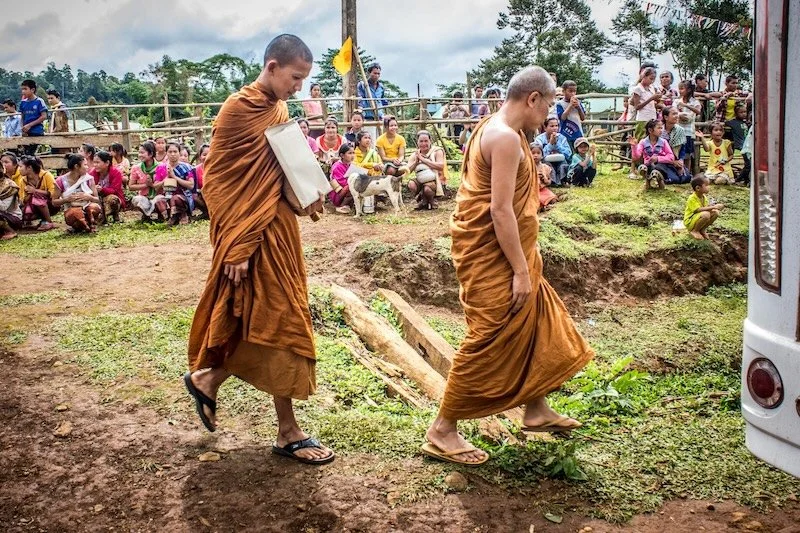Why Thai House Blessings Matter—and How They Work
Building a home in Thailand is not only about design and construction—it is also about tradition. For generations, Thai families have followed spiritual rituals to ensure their houses are filled with good fortune and protected from misfortune. One of the most significant is the Main and Secondary Pillar Ceremony, known as Piti Sao Ehk Sao Toe.
All house constructions always starts with monks performing a special ritual. Photo: Suraphat Nuea-on
See video of the ritual at the end of this article
More Than Just a Building
In Thailand, a house is never seen as just walls and a roof. It is a place where spirits dwell, family gathers, and life unfolds. Because of this, the act of building a home is also a spiritual journey. One of the most important traditions is the “Piti Sao Ehk Sao Toe” (พิธีเสาเอกเสาโท) – the Main and Secondary Pillar Ceremony. This rite marks the very beginning of construction and is believed to set the destiny of the house and its residents.
The Symbolism of the Pillars
Every Thai house begins with pillars, but the first two have special meaning:
Sao Ehk (Main Pillar): A symbol of strength, endurance, and the invisible shield that protects the family.
Sao Toe (Secondary Pillar): Represents balance, support, and the harmony needed for a household to thrive.
Placing these pillars is not simply construction—it is an invitation for stability, prosperity, and peace to take root.
The Ritual in Practice
The ceremony is often led by monks or Brahmin priests who chant mantras to welcome benevolent spirits and clear away misfortune. Offerings of fruit, flowers, incense, and candles are made, while holy water and sacred white thread are used to bind the house to blessings.
Traditionally, the ritual takes place before the first column is set into the ground, but in some regions it may also be performed before moving in. In either case, it marks a threshold: the transformation of empty land into a protected home.
A Meeting of Culture and Daily Life
For Thais, this is not just formality but a way of ensuring that a new home begins on the right note. Even practical-minded families often hold the ritual, believing that harmony between the spiritual and material worlds leads to good fortune.
Expats who take part in such ceremonies often describe the experience as grounding. It shows respect for local tradition, reassures neighbours, and creates a sense of belonging. Whether one views it as spiritual protection or cultural etiquette, the result is the same: the home begins with peace rather than uncertainty.
Why It Endures and Matters for Expats
Despite rapid modernization, these ceremonies remain common across Thailand. They reflect a worldview where building a home is not just about engineering but about weaving the visible and invisible together. For many, the ritual offers comfort—a reminder that a house is more than shelter, it is the heart of a family’s story.
If you´re an expat and have a Thai wife or husband, they will probably consider these rituals essential. Either way, it’s important to show respect for local culture—and your neighbors will likely appreciate that your home has been blessed, especially since their house is nearby. Taking part in the ceremony is also a fascinating experience in itself: you get to witness a unique tradition, learn more about Thai culture, and add a meaningful moment that enriches your life.
Here is a video of the ceremony (it is not my YouTube channel):

